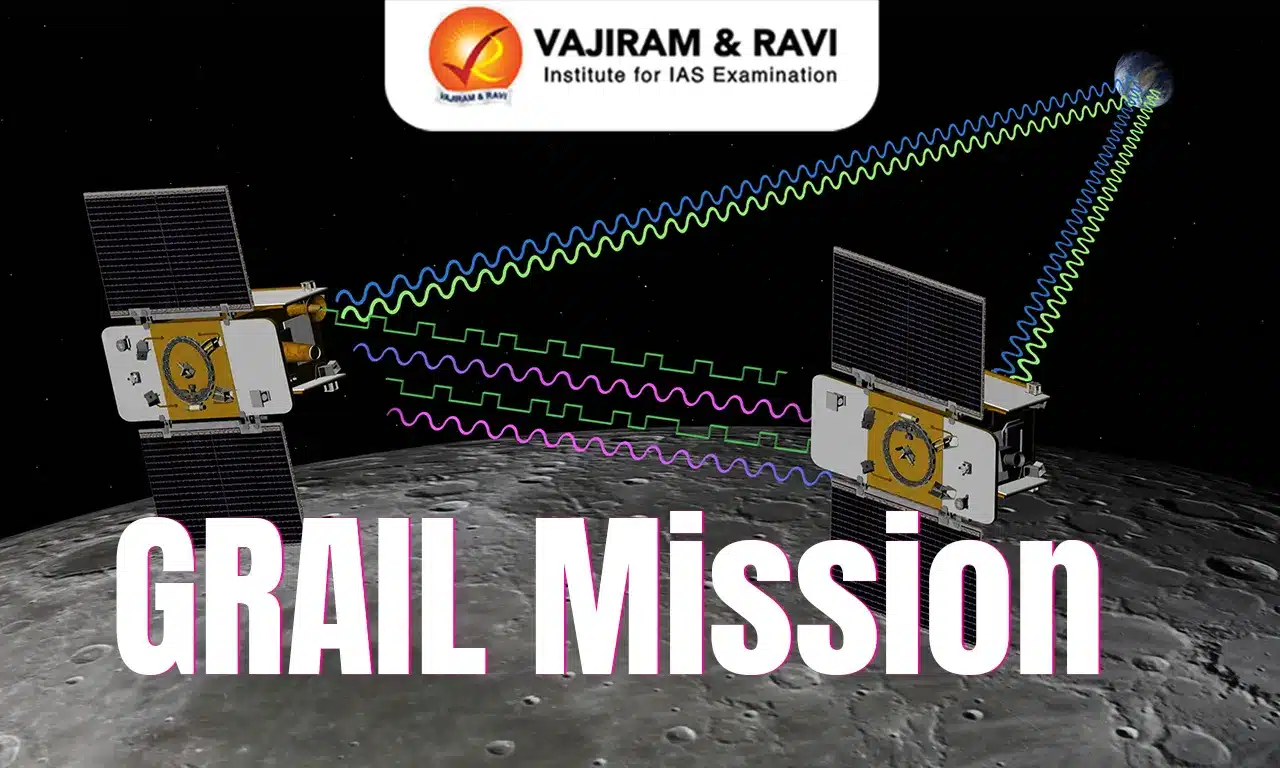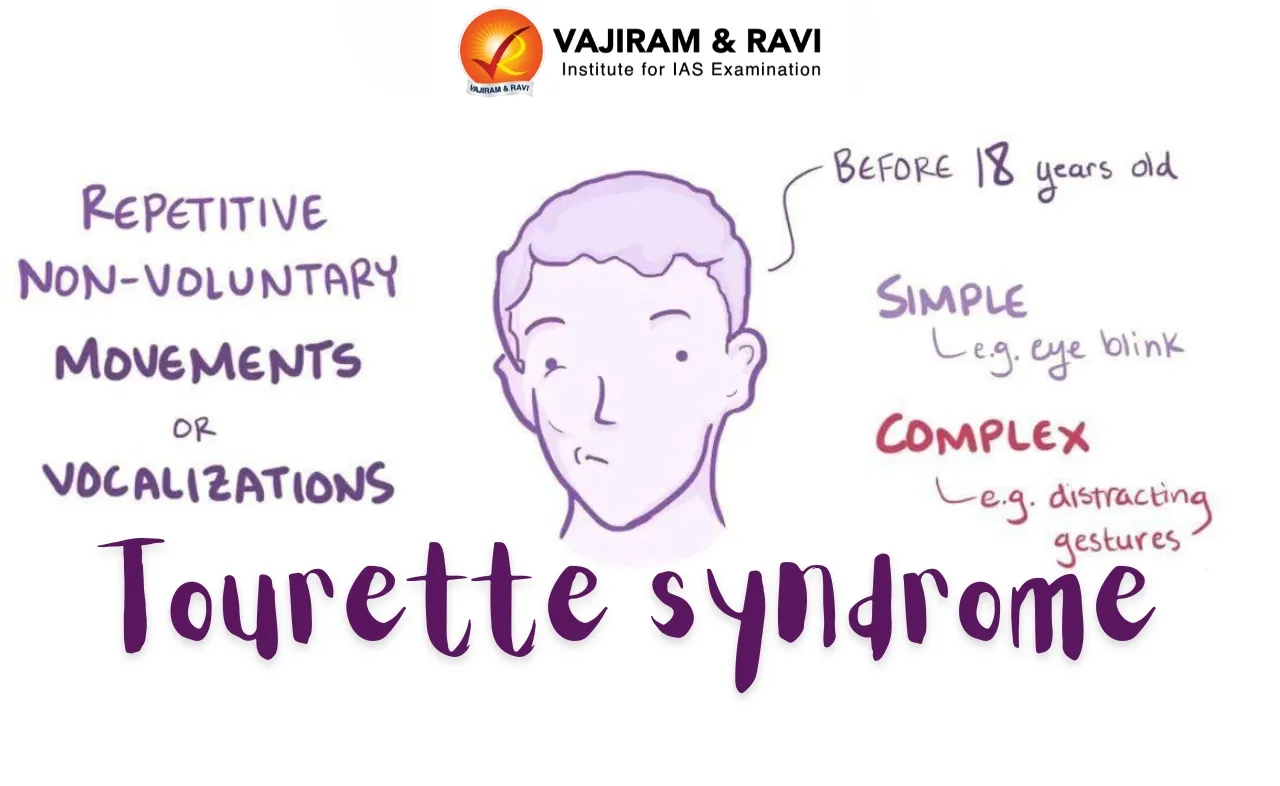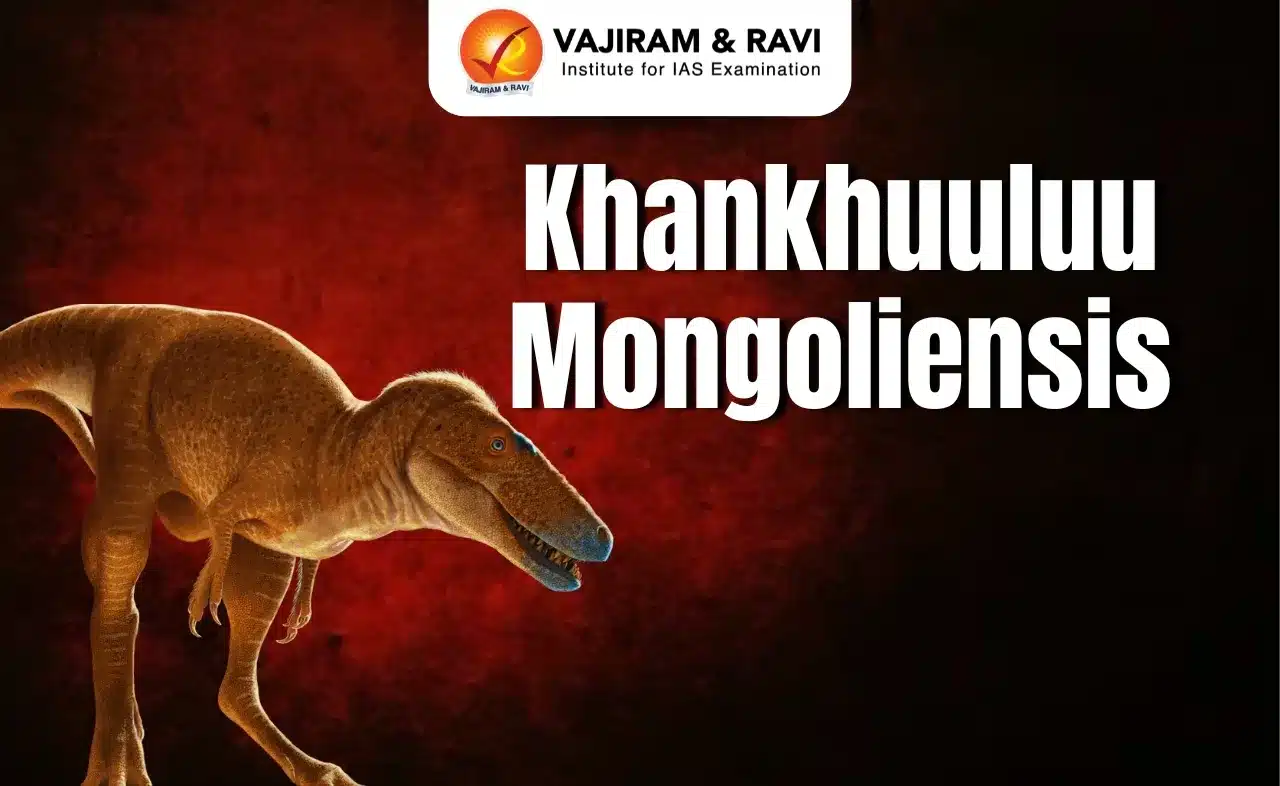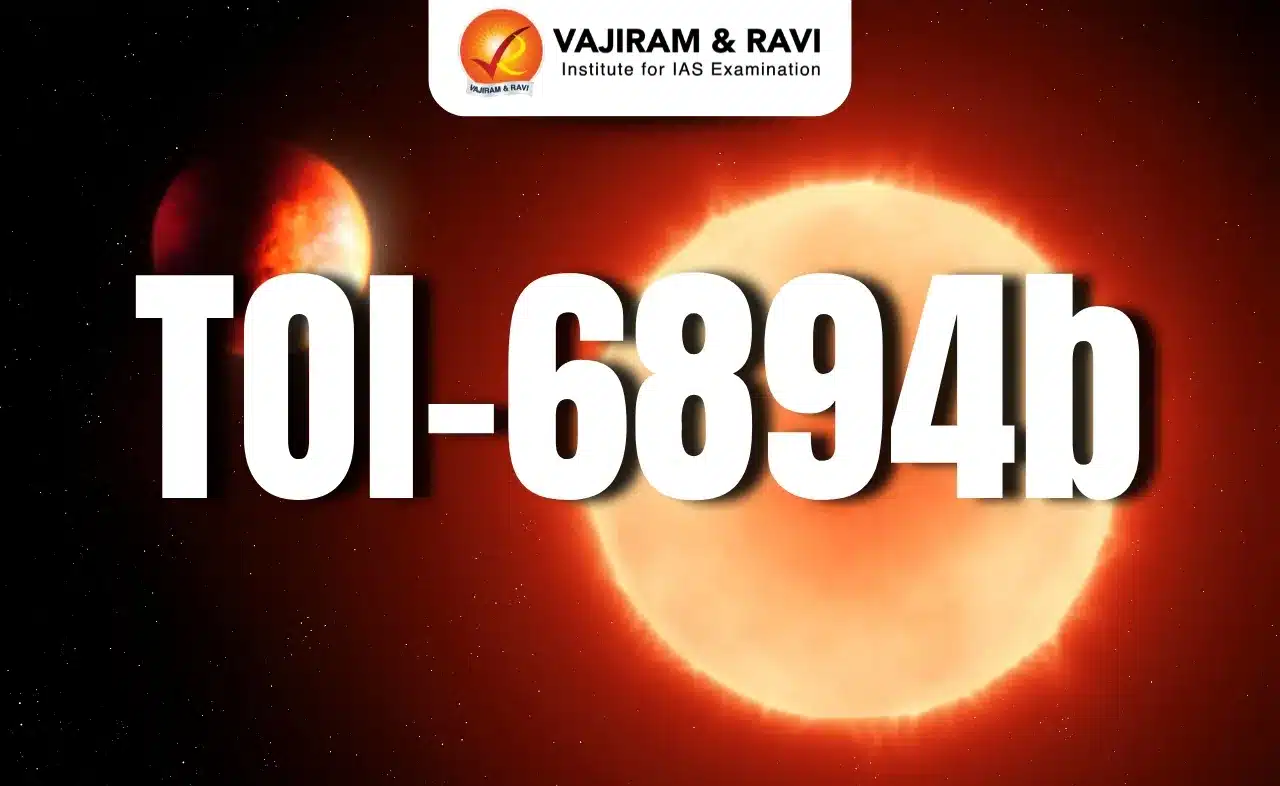GRAIL Mission Latest News
NASA’s GRAIL mission recently unveiled significant differences between the moon’s nearside and farside, attributing them to tidal deformation and varied volcanic activity.
About GRAIL Mission
- Gravity Recovery and Interior Laboratory (GRAIL) is a NASA lunar mission launched in 2011.
- It consisted of two robotic spacecraft, Ebb and Flow, which orbited the moon to create the most detailed gravitational map of the lunar surface to date.
- The mission’s primary goal was to measure variations in the moon’s gravitational field, providing critical insights into its internal structure and geological history.
- The GRAIL mission achieved this by precisely measuring the distance between the two spacecraft as they orbited the moon.
- Even tiny changes in this distance, caused by variations in the moon’s gravitational pull, provided data about the moon’s interior composition, crust thickness, and subsurface anomalies.
- This approach has proven crucial for understanding the forces that shaped the moon’s contrasting hemispheres.
- GRAIL discovered that the Moon’s crust was more porous and not as thick as previously supposed.
- It also discovered long linear features called “dikes” that were evidence of the Moon’s expansion by a few kilometres early in its history.
- Recent Findings: It unveiled significant differences between the moon’s nearside and farside, attributing them to
- Tidal deformation and gravitational asymmetry:
- The lunar nearside flexes slightly more than the farside during its elliptical orbit around Earth, a phenomenon known as tidal deformation.
- This difference in flexibility is primarily driven by Earth’s gravitational pull, which exerts a greater influence on the side facing our planet.
- Volcanic activity and heat distribution:
- The moon’s nearside was once more volcanically active than the farside with vast plains of basaltic rock known as “mare.”
- This volcanic activity concentrated heat-producing, radioactive elements like thorium and titanium in the nearside mantle, resulting in a significant temperature difference between the two hemispheres, creating a long-term thermal imbalance that has shaped the moon’s geology over billions of years.
- Crustal thickness and surface composition: The nearside crust is significantly thinner than the farside crust, allowing magma from the moon’s interior to more easily reach the surface in the past, leading to extensive lava flows.
- Tidal deformation and gravitational asymmetry:
GRAIL Mission FAQs
Q1. What was the primary objective of the GRAIL mission?
Ans. To measure variations in the Moon’s gravitational field.
Q2. Why does the Moon’s nearside have more volcanic activity than the farside?
Ans. Its crust is thinner, allowing magma to escape.
Q3. What were the names of the two robotic spacecraft used in the GRAIL mission?
Ans. Ebb and Flow
Source: TOI
Last updated on June, 2025
→ UPSC Notification 2025 was released on 22nd January 2025.
→ UPSC Prelims Result 2025 is out now for the CSE held on 25 May 2025.
→ UPSC Prelims Question Paper 2025 and Unofficial Prelims Answer Key 2025 are available now.
→ UPSC Calendar 2026 is released on 15th May, 2025.
→ The UPSC Vacancy 2025 were released 1129, out of which 979 were for UPSC CSE and remaining 150 are for UPSC IFoS.
→ UPSC Mains 2025 will be conducted on 22nd August 2025.
→ UPSC Prelims 2026 will be conducted on 24th May, 2026 & UPSC Mains 2026 will be conducted on 21st August 2026.
→ The UPSC Selection Process is of 3 stages-Prelims, Mains and Interview.
→ UPSC Result 2024 is released with latest UPSC Marksheet 2024. Check Now!
→ UPSC Toppers List 2024 is released now. Shakti Dubey is UPSC AIR 1 2024 Topper.
→ Also check Best IAS Coaching in Delhi
Tags: GRAIL mission Prelims Pointers upsc prelims current affairs






















